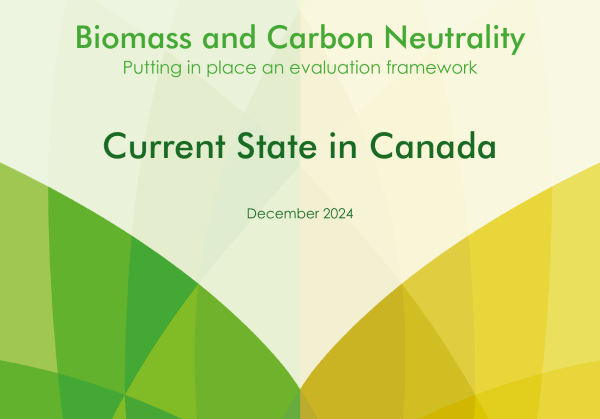Publications
Biomass and Carbon Neutrality
Current State in Canada
Given that biomass resources are expected to play a major role in the transition to net- zero, many studies have estimated the potential of biomass feedstocks for the deployment of bioenergy systems in Canada. Even though biomass resources are abundant and renewable, the portion that can be sustainably harvested each year and processed to meet a wide range of societal needs is limited. The recuperation of unmerchantable wood and harvest residues in the forestry and agricultural sectors could also be considered a way to valorize unused residual biomass. Feedstocks could be allocated to various applications, including combustion for heat and power, conversion to biofuels, renewable natural gas, biochar, wood composite products, biopolymers, and so on. However, the decarbonization pathways of several economic sectors are based on the same types of biomass feedstocks, which could lead to competition. For example, the decarbonization of the aviation sector and road transportation sectors involved are closely related through the technologies that can produce adjustable fractions of biojet and renewable diesel. Depending on how these projects develop, this competition could either accelerate decarbonization or create significant tensions.
With the development of numerous conversion technologies, competing demands from various economic sectors and a limited supply, which pathways would best contribute to carbon neutrality in Canada? The aim of the project Biomass and Carbon Neutrality is to co-develop, through several exchanges and workshops with stakeholders and experts in this domain, an evaluation and comparison framework for the use of biomass resources in Canada in the context of transition to carbon neutrality by 2050.
This report presents an overview of the current situation in Canada regarding the production of both biomass feedstocks and bioproducts. The analysis was performed by searching for publicly available information in the literature on quantities of biomass resources in Canada and the existing commercial or emerging technologies that are being developed worldwide to convert biomass resources to many valuable products for both energy and non-energy usages. This first analysis enables us to identify some key uncertainties tied to the use of biomass resources in the context of transition to net zero. This report will be shared with stakeholders and experts in the domain with a view to receiving comments from a wide variety of perspectives including industries, academia, governments, Indigenous communities, and non-profit organizations, to achieve the end objective of co-constructing an evaluation and comparison framework for biomass usages in a net-zero future.
Updated: February 2025

